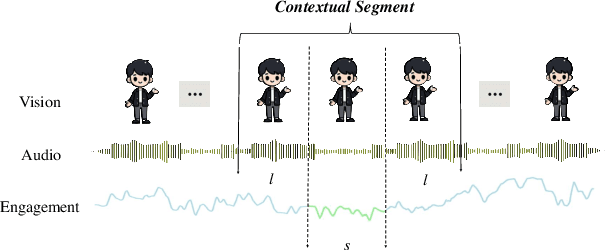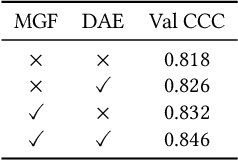Ziqiang Li
Structuring Multiple Simple Cycle Reservoirs with Particle Swarm Optimization
Apr 06, 2025Abstract:Reservoir Computing (RC) is a time-efficient computational paradigm derived from Recurrent Neural Networks (RNNs). The Simple Cycle Reservoir (SCR) is an RC model that stands out for its minimalistic design, offering extremely low construction complexity and proven capability of universally approximating time-invariant causal fading memory filters, even in the linear dynamics regime. This paper introduces Multiple Simple Cycle Reservoirs (MSCRs), a multi-reservoir framework that extends Echo State Networks (ESNs) by replacing a single large reservoir with multiple interconnected SCRs. We demonstrate that optimizing MSCR using Particle Swarm Optimization (PSO) outperforms existing multi-reservoir models, achieving competitive predictive performance with a lower-dimensional state space. By modeling interconnections as a weighted Directed Acyclic Graph (DAG), our approach enables flexible, task-specific network topology adaptation. Numerical simulations on three benchmark time-series prediction tasks confirm these advantages over rival algorithms. These findings highlight the potential of MSCR-PSO as a promising framework for optimizing multi-reservoir systems, providing a foundation for further advancements and applications of interconnected SCRs for developing efficient AI devices.
A Comprehensive Survey on Visual Concept Mining in Text-to-image Diffusion Models
Mar 17, 2025Abstract:Text-to-image diffusion models have made significant advancements in generating high-quality, diverse images from text prompts. However, the inherent limitations of textual signals often prevent these models from fully capturing specific concepts, thereby reducing their controllability. To address this issue, several approaches have incorporated personalization techniques, utilizing reference images to mine visual concept representations that complement textual inputs and enhance the controllability of text-to-image diffusion models. Despite these advances, a comprehensive, systematic exploration of visual concept mining remains limited. In this paper, we categorize existing research into four key areas: Concept Learning, Concept Erasing, Concept Decomposition, and Concept Combination. This classification provides valuable insights into the foundational principles of Visual Concept Mining (VCM) techniques. Additionally, we identify key challenges and propose future research directions to propel this important and interesting field forward.
Proxy-Tuning: Tailoring Multimodal Autoregressive Models for Subject-Driven Image Generation
Mar 13, 2025Abstract:Multimodal autoregressive (AR) models, based on next-token prediction and transformer architecture, have demonstrated remarkable capabilities in various multimodal tasks including text-to-image (T2I) generation. Despite their strong performance in general T2I tasks, our research reveals that these models initially struggle with subject-driven image generation compared to dominant diffusion models. To address this limitation, we introduce Proxy-Tuning, leveraging diffusion models to enhance AR models' capabilities in subject-specific image generation. Our method reveals a striking weak-to-strong phenomenon: fine-tuned AR models consistently outperform their diffusion model supervisors in both subject fidelity and prompt adherence. We analyze this performance shift and identify scenarios where AR models excel, particularly in multi-subject compositions and contextual understanding. This work not only demonstrates impressive results in subject-driven AR image generation, but also unveils the potential of weak-to-strong generalization in the image generation domain, contributing to a deeper understanding of different architectures' strengths and limitations.
Generalizable Deepfake Detection via Effective Local-Global Feature Extraction
Jan 25, 2025



Abstract:The rapid advancement of GANs and diffusion models has led to the generation of increasingly realistic fake images, posing significant hidden dangers and threats to society. Consequently, deepfake detection has become a pressing issue in today's world. While some existing methods focus on forgery features from either a local or global perspective, they often overlook the complementary nature of these features. Other approaches attempt to incorporate both local and global features but rely on simplistic strategies, such as cropping, which fail to capture the intricate relationships between local features. To address these limitations, we propose a novel method that effectively combines local spatial-frequency domain features with global frequency domain information, capturing detailed and holistic forgery traces. Specifically, our method uses Discrete Wavelet Transform (DWT) and sliding windows to tile forged features and leverages attention mechanisms to extract local spatial-frequency domain information. Simultaneously, the phase component of the Fast Fourier Transform (FFT) is integrated with attention mechanisms to extract global frequency domain information, complementing the local features and ensuring the integrity of forgery detection. Comprehensive evaluations on open-world datasets generated by 34 distinct generative models demonstrate a significant improvement of 2.9% over existing state-of-the-art methods.
Follow-Your-MultiPose: Tuning-Free Multi-Character Text-to-Video Generation via Pose Guidance
Dec 21, 2024



Abstract:Text-editable and pose-controllable character video generation is a challenging but prevailing topic with practical applications. However, existing approaches mainly focus on single-object video generation with pose guidance, ignoring the realistic situation that multi-character appear concurrently in a scenario. To tackle this, we propose a novel multi-character video generation framework in a tuning-free manner, which is based on the separated text and pose guidance. Specifically, we first extract character masks from the pose sequence to identify the spatial position for each generating character, and then single prompts for each character are obtained with LLMs for precise text guidance. Moreover, the spatial-aligned cross attention and multi-branch control module are proposed to generate fine grained controllable multi-character video. The visualized results of generating video demonstrate the precise controllability of our method for multi-character generation. We also verify the generality of our method by applying it to various personalized T2I models. Moreover, the quantitative results show that our approach achieves superior performance compared with previous works.
DAT: Dialogue-Aware Transformer with Modality-Group Fusion for Human Engagement Estimation
Oct 11, 2024



Abstract:Engagement estimation plays a crucial role in understanding human social behaviors, attracting increasing research interests in fields such as affective computing and human-computer interaction. In this paper, we propose a Dialogue-Aware Transformer framework (DAT) with Modality-Group Fusion (MGF), which relies solely on audio-visual input and is language-independent, for estimating human engagement in conversations. Specifically, our method employs a modality-group fusion strategy that independently fuses audio and visual features within each modality for each person before inferring the entire audio-visual content. This strategy significantly enhances the model's performance and robustness. Additionally, to better estimate the target participant's engagement levels, the introduced Dialogue-Aware Transformer considers both the participant's behavior and cues from their conversational partners. Our method was rigorously tested in the Multi-Domain Engagement Estimation Challenge held by MultiMediate'24, demonstrating notable improvements in engagement-level regression precision over the baseline model. Notably, our approach achieves a CCC score of 0.76 on the NoXi Base test set and an average CCC of 0.64 across the NoXi Base, NoXi-Add, and MPIIGI test sets.
One-shot Generative Domain Adaptation in 3D GANs
Oct 11, 2024



Abstract:3D-aware image generation necessitates extensive training data to ensure stable training and mitigate the risk of overfitting. This paper first considers a novel task known as One-shot 3D Generative Domain Adaptation (GDA), aimed at transferring a pre-trained 3D generator from one domain to a new one, relying solely on a single reference image. One-shot 3D GDA is characterized by the pursuit of specific attributes, namely, high fidelity, large diversity, cross-domain consistency, and multi-view consistency. Within this paper, we introduce 3D-Adapter, the first one-shot 3D GDA method, for diverse and faithful generation. Our approach begins by judiciously selecting a restricted weight set for fine-tuning, and subsequently leverages four advanced loss functions to facilitate adaptation. An efficient progressive fine-tuning strategy is also implemented to enhance the adaptation process. The synergy of these three technological components empowers 3D-Adapter to achieve remarkable performance, substantiated both quantitatively and qualitatively, across all desired properties of 3D GDA. Furthermore, 3D-Adapter seamlessly extends its capabilities to zero-shot scenarios, and preserves the potential for crucial tasks such as interpolation, reconstruction, and editing within the latent space of the pre-trained generator. Code will be available at https://github.com/iceli1007/3D-Adapter.
Scene Graph Disentanglement and Composition for Generalizable Complex Image Generation
Oct 01, 2024Abstract:There has been exciting progress in generating images from natural language or layout conditions. However, these methods struggle to faithfully reproduce complex scenes due to the insufficient modeling of multiple objects and their relationships. To address this issue, we leverage the scene graph, a powerful structured representation, for complex image generation. Different from the previous works that directly use scene graphs for generation, we employ the generative capabilities of variational autoencoders and diffusion models in a generalizable manner, compositing diverse disentangled visual clues from scene graphs. Specifically, we first propose a Semantics-Layout Variational AutoEncoder (SL-VAE) to jointly derive (layouts, semantics) from the input scene graph, which allows a more diverse and reasonable generation in a one-to-many mapping. We then develop a Compositional Masked Attention (CMA) integrated with a diffusion model, incorporating (layouts, semantics) with fine-grained attributes as generation guidance. To further achieve graph manipulation while keeping the visual content consistent, we introduce a Multi-Layered Sampler (MLS) for an "isolated" image editing effect. Extensive experiments demonstrate that our method outperforms recent competitors based on text, layout, or scene graph, in terms of generation rationality and controllability.
Large Language Models are Good Attackers: Efficient and Stealthy Textual Backdoor Attacks
Aug 21, 2024Abstract:With the burgeoning advancements in the field of natural language processing (NLP), the demand for training data has increased significantly. To save costs, it has become common for users and businesses to outsource the labor-intensive task of data collection to third-party entities. Unfortunately, recent research has unveiled the inherent risk associated with this practice, particularly in exposing NLP systems to potential backdoor attacks. Specifically, these attacks enable malicious control over the behavior of a trained model by poisoning a small portion of the training data. Unlike backdoor attacks in computer vision, textual backdoor attacks impose stringent requirements for attack stealthiness. However, existing attack methods meet significant trade-off between effectiveness and stealthiness, largely due to the high information entropy inherent in textual data. In this paper, we introduce the Efficient and Stealthy Textual backdoor attack method, EST-Bad, leveraging Large Language Models (LLMs). Our EST-Bad encompasses three core strategies: optimizing the inherent flaw of models as the trigger, stealthily injecting triggers with LLMs, and meticulously selecting the most impactful samples for backdoor injection. Through the integration of these techniques, EST-Bad demonstrates an efficient achievement of competitive attack performance while maintaining superior stealthiness compared to prior methods across various text classifier datasets.
Infinite-ID: Identity-preserved Personalization via ID-semantics Decoupling Paradigm
Mar 18, 2024



Abstract:Drawing on recent advancements in diffusion models for text-to-image generation, identity-preserved personalization has made significant progress in accurately capturing specific identities with just a single reference image. However, existing methods primarily integrate reference images within the text embedding space, leading to a complex entanglement of image and text information, which poses challenges for preserving both identity fidelity and semantic consistency. To tackle this challenge, we propose Infinite-ID, an ID-semantics decoupling paradigm for identity-preserved personalization. Specifically, we introduce identity-enhanced training, incorporating an additional image cross-attention module to capture sufficient ID information while deactivating the original text cross-attention module of the diffusion model. This ensures that the image stream faithfully represents the identity provided by the reference image while mitigating interference from textual input. Additionally, we introduce a feature interaction mechanism that combines a mixed attention module with an AdaIN-mean operation to seamlessly merge the two streams. This mechanism not only enhances the fidelity of identity and semantic consistency but also enables convenient control over the styles of the generated images. Extensive experimental results on both raw photo generation and style image generation demonstrate the superior performance of our proposed method.
 Add to Chrome
Add to Chrome Add to Firefox
Add to Firefox Add to Edge
Add to Edge